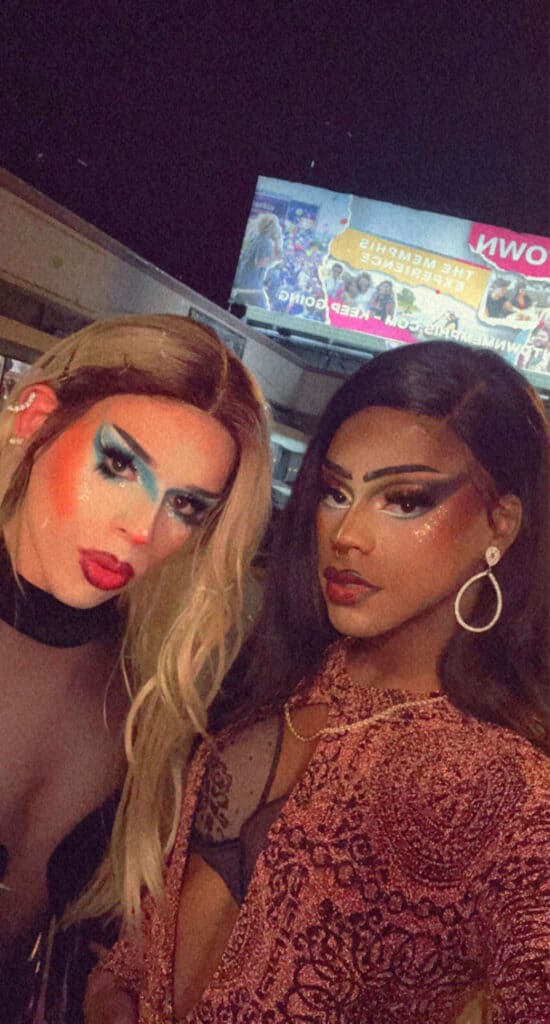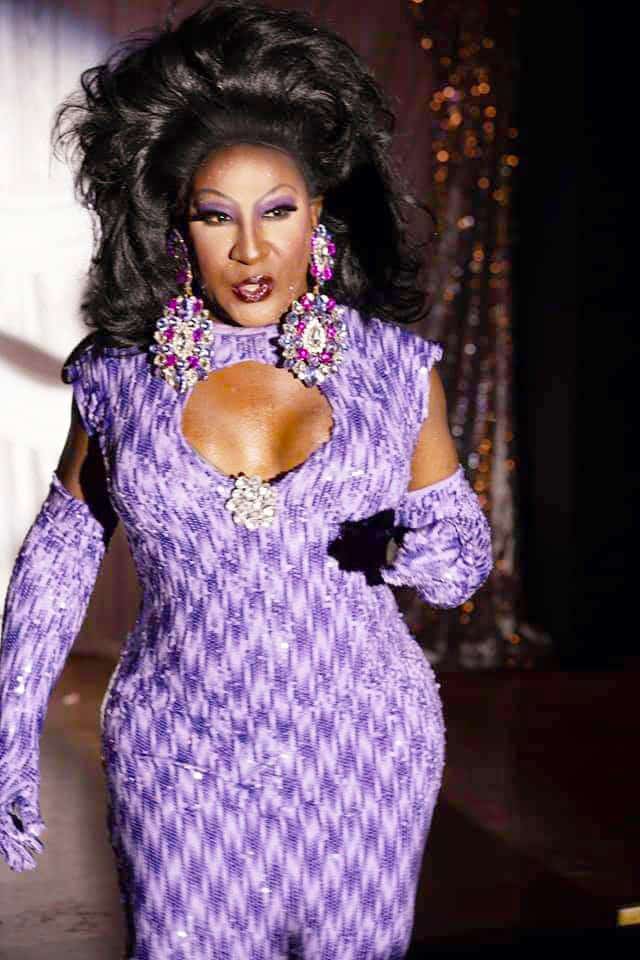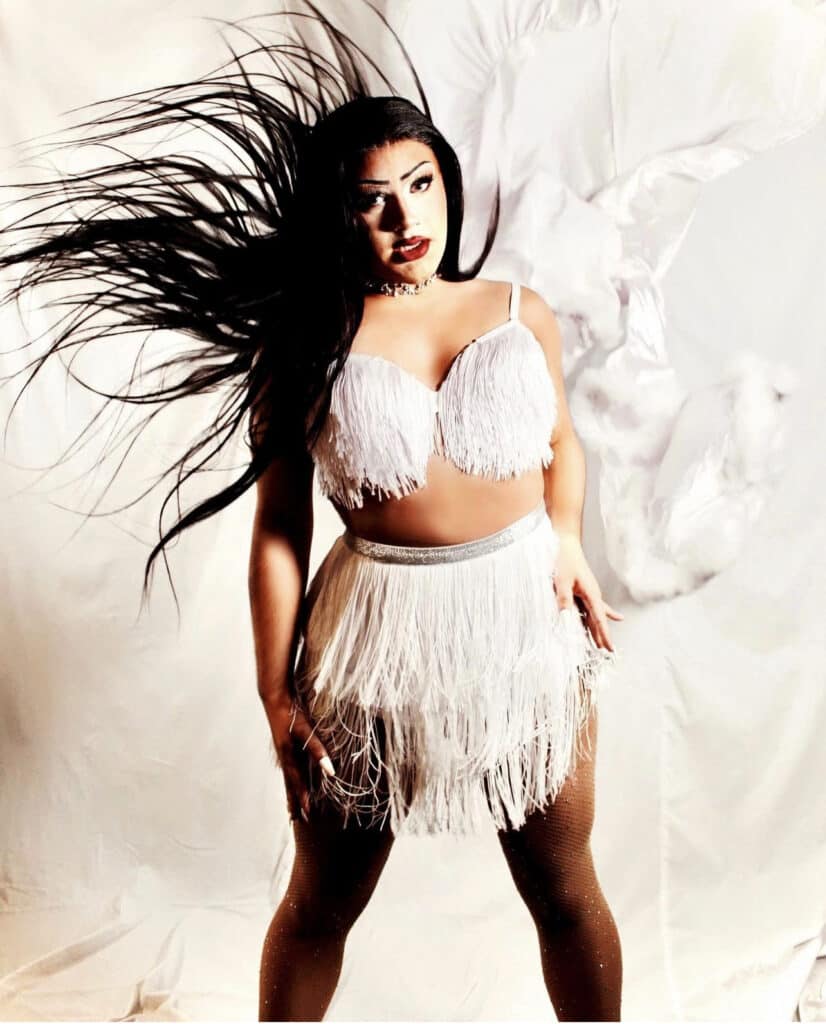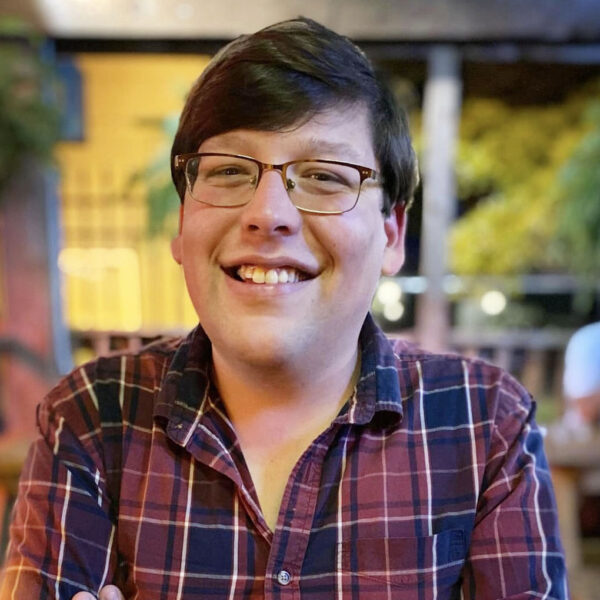story by William Smythe | above photo by Drew Parker
She ascends onto her stage at Hi Tone in 8-inch stilettos and drags a painted hand through the air. Her face is focused and pouty, thicker than a Kardashian or even, dare I say, Julia Fox. She turns her pastel claws over and over, like she’s feeling for… something. Something… electric! As if it doesn’t crackle so profoundly in the air. Some would say ‘like a power plant on the verge of exploding’. But, to be frank, it’s more like when lightning is about to strike. When you can feel the hairs on your head start to stand. And that deep feeling in your chest begins to rise.
And when that lightning makes contact, when its tension is finally released, it’s on beat with “Work Bitch” by Britney Spears. And our dear queen is already halfway through her death drop, ready to bring the thunder.
For around a week or so this fall, I had the pleasure of interviewing some of our local drag superstars–a few of whom are on the rise and one who has been in this business for almost 30 years. Wish I could announce them the way it’s usually done, by microphone or even megaphone, but sadly, I don’t think they’ve invented a way to do so on the page! So, please, use your imagination as I introduce you to:
LA MIXSI! Also known as Ulises offstage, she has been waiting to do drag ever since she was young. “Drag for me,” she says, “has been a beacon of light at the end of the tunnel … It goes beyond what you wear, what you perform, it’s about finding your way back into enjoying life.” And when you see her strut on stage, you can feel that confidence shine.
Next, we have CHERI LIEMAID! Her introduction to drag resembles our La Mixsi. Cheri explains that her personal outlet during high school had been makeup. “When everything was going bad around me, I turned to makeup to make me feel better about myself.” She goes on to say that she would love to create her own makeup line and own a club where “queens around the world would want to come to and share their creativity and beauty.” Well, dare I say, I would love to see that in her future and ours for sure.

And here comes our Venezuelan queen: SHIKLINA! She reveals that growing up she spent hours watching divas like Madonna, Jennifer Lopez, Marilyn Monroe, and many others. “I always knew I wanted to be like them,” she divulges, “and there was no other way to express it better than with drag.” She describes performing as being “an escape to a fantastic reality” and that it lets her “true colors shine bright.” “Drag is not just dress-up,” she goes on to explain, “It is also an experience.” An experience that she hopes to inspire in others, just as she was inspired by her own idols.
And now, last but not least, MISS TRABECCA COLLIONS! Having done drag since 1995, Trabecca has seen everything. The rise and fall of local clubs, the slow climb towards trans-equality, and the height of the AIDs epidemic. But she’s never let any of that slow her down. In fact, her accomplishments are many, as she goes on to list: “I was the show director at Crossroads, Lorenz Aftershock, Club Studio Blu, and Club Insight. I have won over 18 pageant titles since I’ve been doing drag. But my greatest accomplishments were when I won Miss Crossroads 2002, Miss Independence Place 2020, and Miss Gay Missouri USofA 2021.”
But these queens aren’t just their accomplishments. They have high hopes, too, for the local drag scene. In town, almost all of them have high praise for showrunners like Hunny Blunt and Bella du Balle. Even higher praise, too, for venues such as DKDC, Lamplighter Lounge, and Atomic Rose.
In fact, Cheri Liemaid says that she “thanks Hunny Blunt and Kaiyla Dickerson for all the performances and feedback.” She goes on to state that she “hopes that people understand that drag is more than dressing up as the opposite gender,” that it takes a lot of focus and persistence to perfect your performances. “Drag for me is a safe space for all people that want to express their craft, art, dance, and creativity.”
Both Shiklina and La Mixsi agree with Cheri that they’ve also found sanctuary in the local drag community. That performance helps them express themselves fully and shamelessly. In fact, according to Shiklina, places like “Atomic Rose, the Lamplighter Lounge, DKDC… are very welcoming to the new drag scene … Every venue is a blessing, but every performance is an opportunity. It’s up to you to decide what to do with both.” La Mixsi adds, too, that people like Hunny Blunt and many others have “created a safe space[s]…that gives baby queens, afab performers, drag kings, burlesque performers, etc. a platform to not only present show, but to gain experience, safely with words of love, encouragement, and compassion.”

For the most part, that is something all four agree on– that seeing the rise of non-AMAB performers signals a growth they all expect and want. Shiklina professes how “it shows the barriers we’re breaking and how hugely we’re growing worldwide as a community.” And Trabecca agrees, stating that she is “glad to see how the new upcoming Queens are going in the right direction [when it comes to] make up, fashion, wigs, and musical choice.” She does look back fondly on her times in the club scene, though, how her first show was at “the legendary bar Apartment Club. First song to do was “You Give Good Love” by Whitney Houston. Oh honey, back then the clubs were fabulous…Back then, couples or lovers, as we called it, would dance together, have double date nights, or just party together. Plus… iconic House Music was the TEA.”
Regardless of the time or location, it seems that wherever the drag stars are, the moods are lifted fully. And these icons all plan to keep the party going no matter where the future may take them. You can’t dampen or darken their vibe, regardless of where they show up. They take the rainbow and its spirit with them, from club to dive to doorway.
Before we call it a night and close these curtains, our queens have a few more words on the future of drag and those who want to jump in. Shiklina remarks that: “As a community, we tend to silence each other for not seeing eye-to-eye when we should be coming together as a force to defend the opportunities that older generations fought for us to keep and have before us.” Trabecca agrees, saying that: “If a queen needs help, help them. If a queen needs make-up tips, show them–because we all had to start somewhere.”
If there’s anything I’ve noticed in these talks with these four, it’s that drag is a community of souls looking for a home to express themselves. And if that’s not what being queer is, your whole self surrounded by love and light, then I don’t know what is. Cheri Liemaid said it better than me though: “…Performers needing to start bringing their true selves into their Drag.” She goes on to say that she hopes that drag queens can change their image as just performers; that they can be seen as community leaders, too, who “prepare, practice, and execute” good values and safe spaces for others.
Shiklina agrees with Trabecca that drag as a whole has changed from being a party scene like it was in Trabecca’s days. That “[drag] used to be a small community, and now we’re a whole nation, a whole statement, a whole movement.” La Mixsi finishes Shiklina’s thought with a wonderful question to pose to future entertainers everywhere.

“People complain that the art form is saturated. And while yes, it is, what makes your drag more valuable and special than anyone else who wants to throw on a wig and wiggle for a dollar? What feeling do you give people when you speak to them? What do your actions show?” And what is her answer?
“We all have the power to change a feeling, we have the power to connect. We have the power of love…it’s up to each of our hearts what route we take.”
In my honest opinion, that sentiment goes strong for all parts of our queer community. And through their craft, our drag community can showcase what it means to be unified and united, backed by a soundtrack as diverse as they are.




